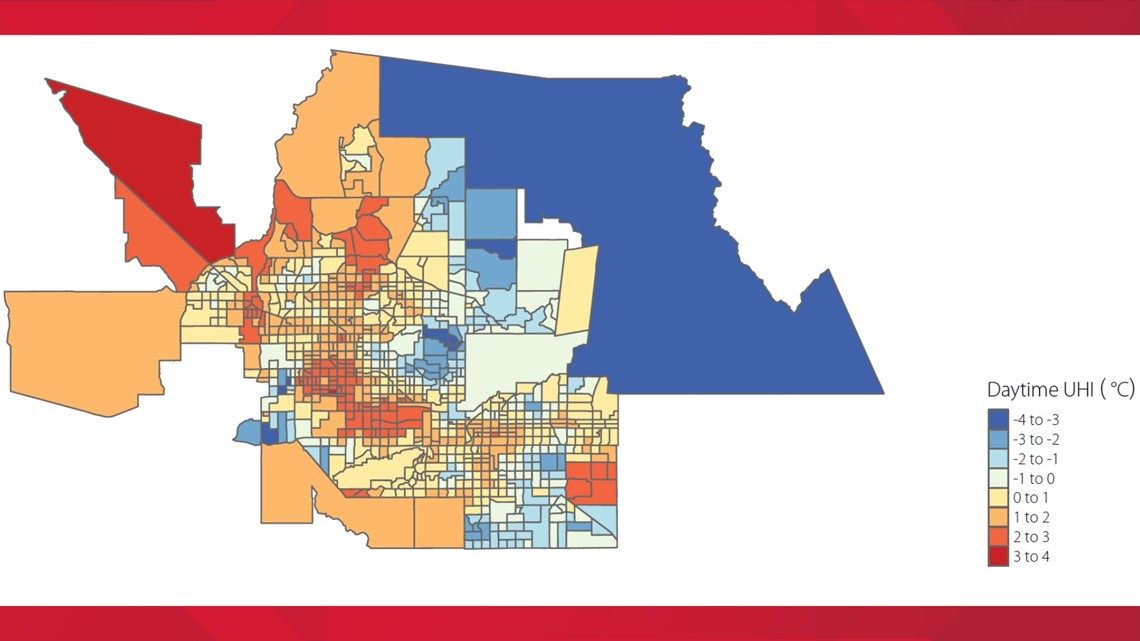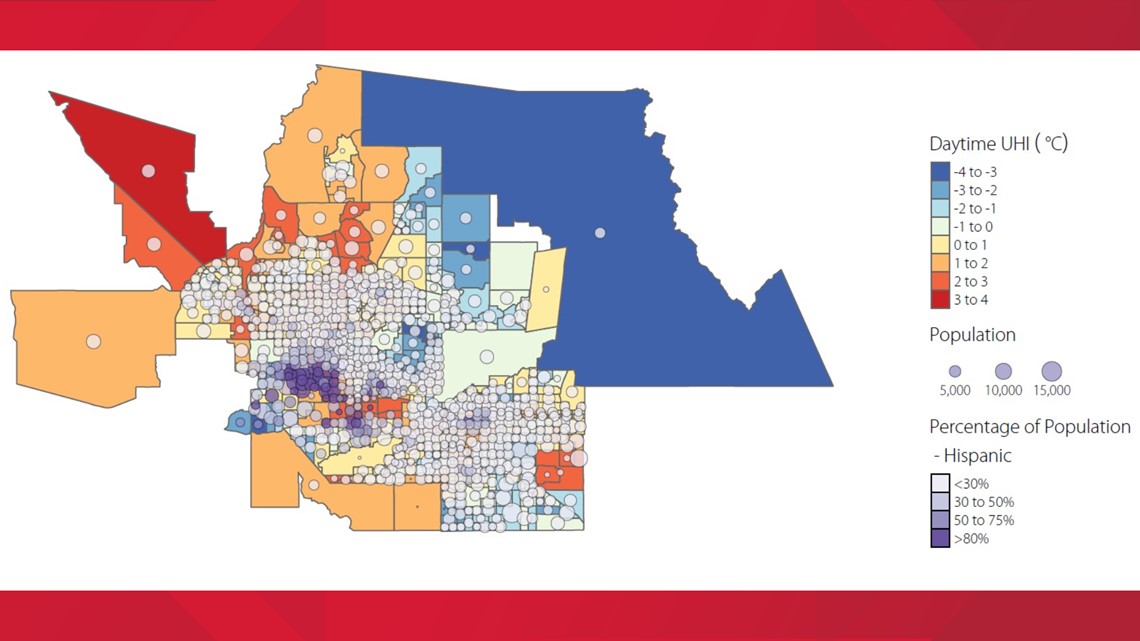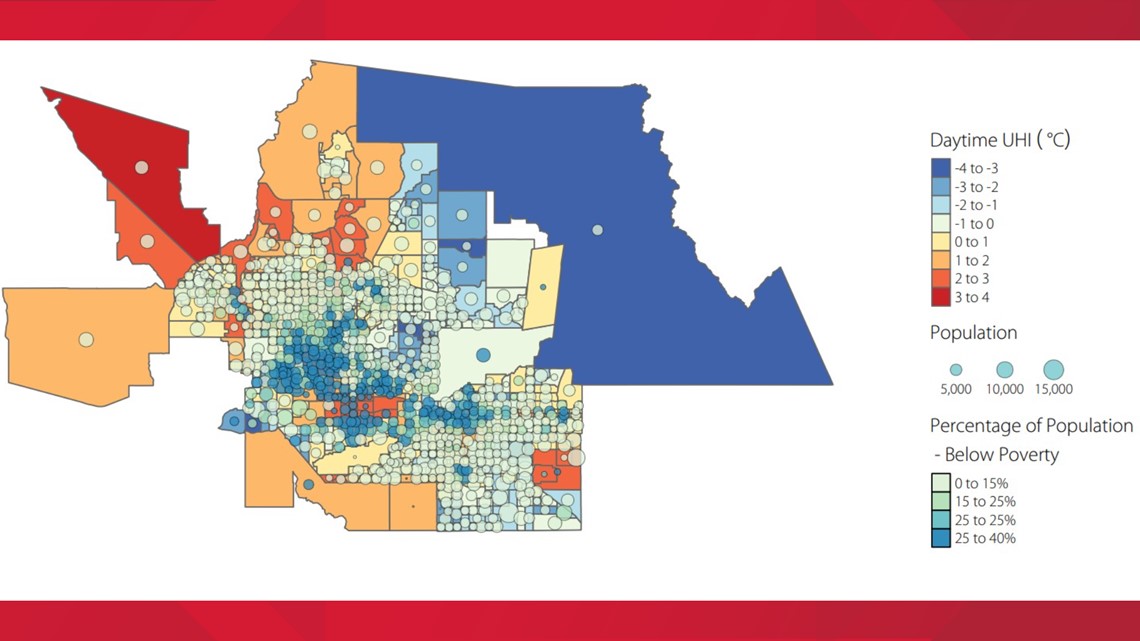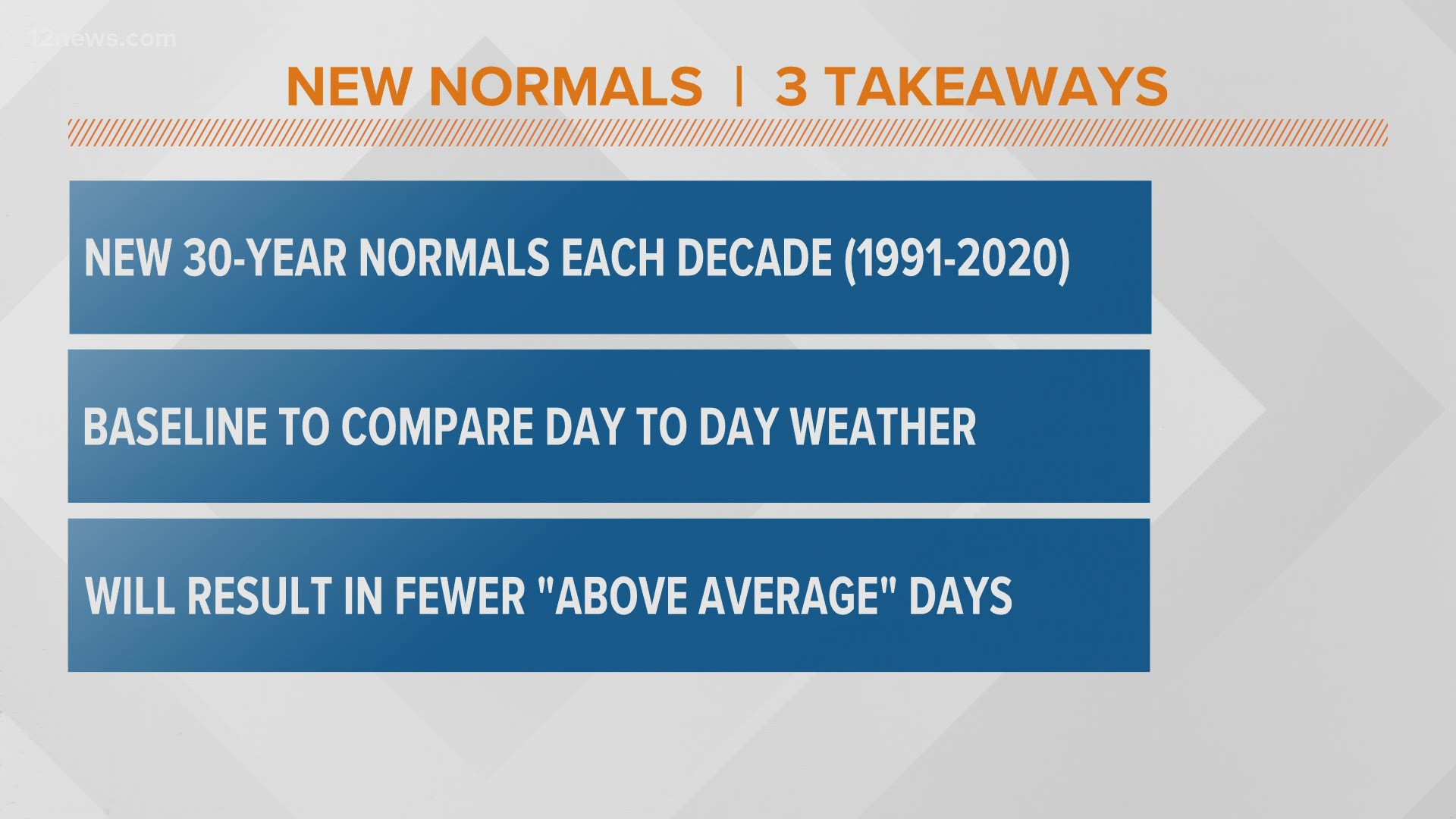PHOENIX — If you were living in the Grand Canyon State last summer, you probably wouldn't be surprised to hear that Arizona is getting warmer.
Phoenix's summer in 2020 broke numerous heat-related records, including the most 100-degree days, the driest Monsoon season, and the latest 90-degree day in history. Experts have also begun to consider heat deaths as seriously as child drownings as the number of heat-related deaths has jumped since 2016.
What may come as a surprise is the fact that Arizona's extreme heat is not felt equally among residents in the Valley.
A recently released study found Hispanic residents living in Arizona's capital face more extreme temperatures compared to white people, and people living in poverty face hotter temperatures than people who are wealthy.
The trend isn't just happening in Phoenix. The study found that people of color and those living below the poverty line experience disproportionately hotter temperatures compared to white or wealthy people in 97% of cities in the U.S.


What the study found:
The authors of the report used government temperature and census data for the country's 175 largest urban areas.
The researchers used the data to look at the distribution of heat islands -- areas in cities that experience higher temperatures than surrounding areas due to buildings, roads, and other infrastructure absorbing and re-emitting the sun’s heat -- and measured the findings through the lens of race and income.
The findings, which were published in the Nature Communications scientific journal, showed the average non-white person lived in a census tract with higher heat island intensity compared to the average white person in all but six of the country’s 175 largest urban areas.
A similar trend was found for those living below the poverty level in cities. The data collected showed people living below the poverty line have the highest urban heat exposure compared to those living above the poverty level.
The trend was very apparent for the researchers in the Phoenix area. The hottest temperatures in the Valley were measured in areas that had a high percentage of Hispanic residents, between 30% and 80%, or a high percentage of residents living in poverty, between 15% and 40%.


The heat disparity in race and wealth are 'almost the same'
The heat disparity comparing people of color to white people and the disparity comparing those living in poverty to the wealthy were statistically similar.
The study's authors broke up city populations while considering temperature for various sub-groups. In this case, one group was people who were living below poverty regardless of race and the other group was people of color regardless of income.
Glenn Sheriff, an economist and assistant professor at Arizona State University's School of Politics and Global Studies, co-authored the report. His original hypothesis was that the average person living below the poverty line would be exposed to higher temperatures than the average person of color since most people of color live above the poverty line.
The study actually ended up showing both populations experience the same disparities.
"If you compare those two distributions, they are almost the same," Sheriff said. "That means that the average person of color is exposed to extreme heat the same way as the average person below the poverty line."
If economic markets were working correctly and the main reason people would be experiencing hotter temperatures was due to home pricing, this shouldn't be how the data turned out, Sheriff said.
This disparity wasn't just in certain areas of the nation. This disparity was constant across 97% of the nation.
"I was expecting it to be worse, but I wasn't expecting it to be all across the country," Sheriff said. "I was thinking it would be bad maybe in certain regions or certain cities that are notorious for this, but the fact that it was almost everywhere was surprising."


What are the impacts of extreme urban heat islands?
The Environmental Protection Agency (EPA) lists multiple ways that elevated temperatures from heat islands can affect a community's quality of life on their website.
The impacts include:
- Increase in heat-related deaths and heat-related illnesses such as general discomfort, respiratory difficulties, heat cramps, heat exhaustion, and non-fatal heat stroke.
- Highten the impact of naturally occurring heat waves, which put sensitive populations like children, older adults, and those with existing health conditions at risk.
- Increase in overall electricity demand and peak energy demand in an effort to cool buildings.
- Increase in air pollutants and greenhouse gas emissions resulting in a worsening in air quality.
- Stressing and even fatal impacts of aquatic life due to increased temperatures of water runoff.
What can be done to alleviate the problem?
The findings of the report did not come as a surprise to Richard Estrada, the League of United Latin American Citizens (LULAC) vice president of the Farwest.
Estrada, a resident of Tucson, said the report highlighted the realities that Hispanic and Latino people have been living with. People in these communities have dealt with extreme heat, poor air quality, and a lack of shaded areas or green spaces for quite a long time.
"[Urban areas], because of what happened years ago, they already have those codes and those industrial zoning areas," Estrada said. "The indoctrinated ways of years past have caught up with us."
RELATED: 6 Arizona counties may be uninhabitable in next 30 years due to climate change, study shows
A common solution that has been proposed for these communities across the country has been gentrification or the process of changing a neighborhood through bringing in more affluent residents or businesses. While Estrada sees this process happening throughout Phoenix and Tucson, he also sees a much more desirable practice happening focused on revitalization.
"A lot of it is economic gentrification...but some of it also isn't," Estrada said. "Some of it is bringing in mom and pop. Those Latino, Caucasian, and Natives that want to have their creative companies or new startups in these areas, investing their time and money and future into these areas."
Individuals living in the communities that experience intense urban heat and want to find ways to change it should look to get involved within their communities, whether that is with other community members, nonprofits, or the government, Estrada said. He recommended the following:
- Check with your county to see if they have housing or economic development programs that are geared towards helping community members
- Look for local nonprofit community programs, such as United Way or Boys & Girls Club
- Find out if there are any federal PPP or PPE monies that are being allocated specifically for utility payments or other economic development
"There are a lot of obstacles that us as a community as a whole need to overcome to make sure we can combat this," Estrada said. "This is an issue that we are having to work with and that we want to remedy."
Arizona Weather
Arizona has seen its fair share of severe weather. Here is a compilation of videos from various storms and weather events across the Grand Canyon state.

